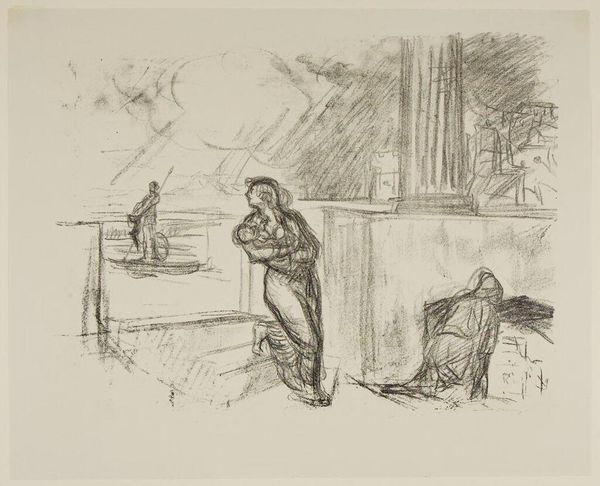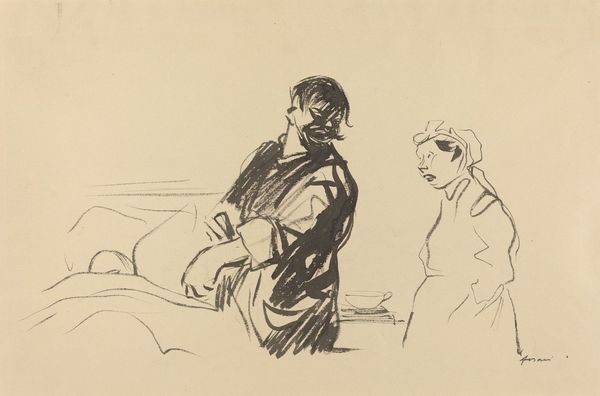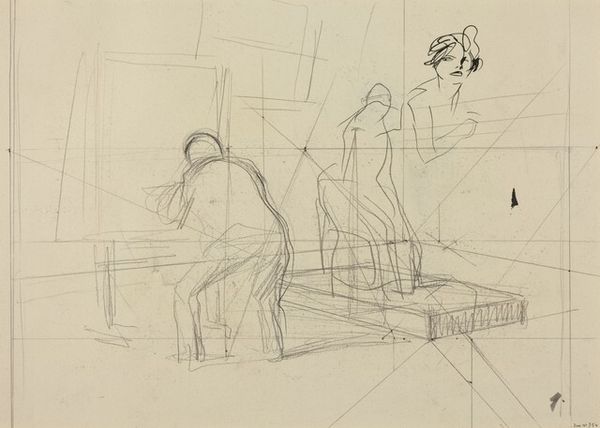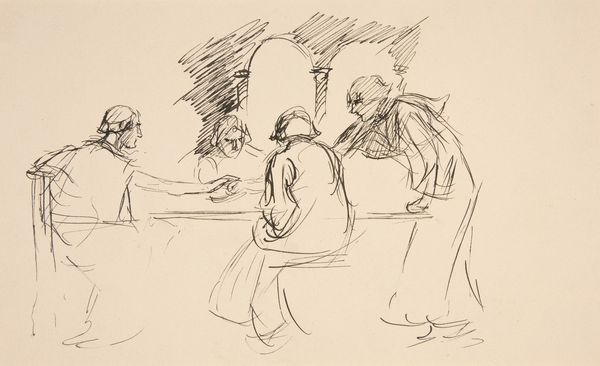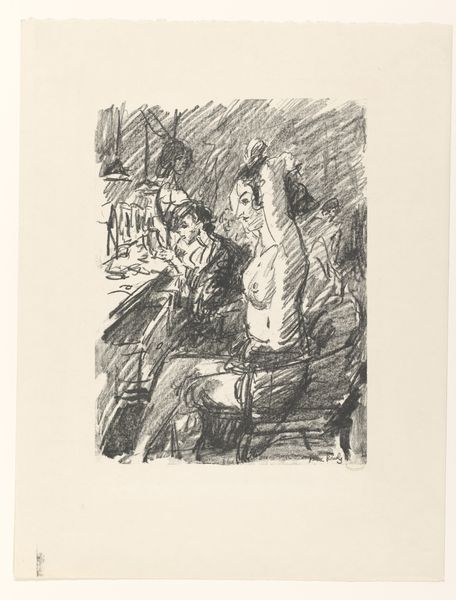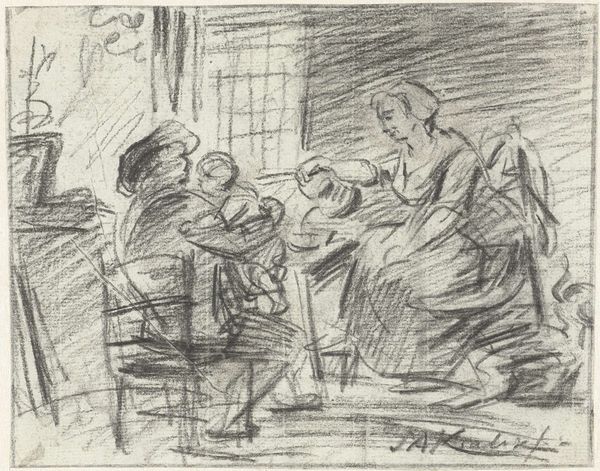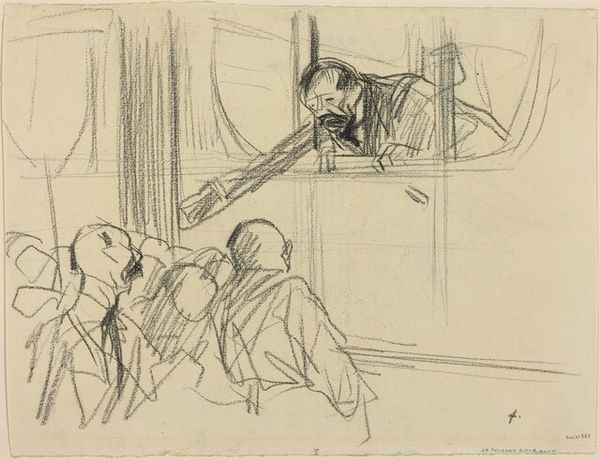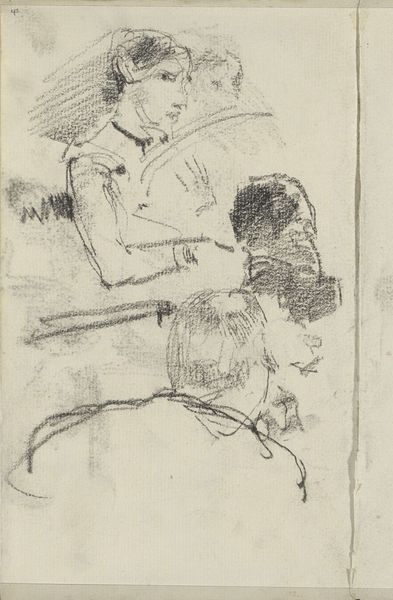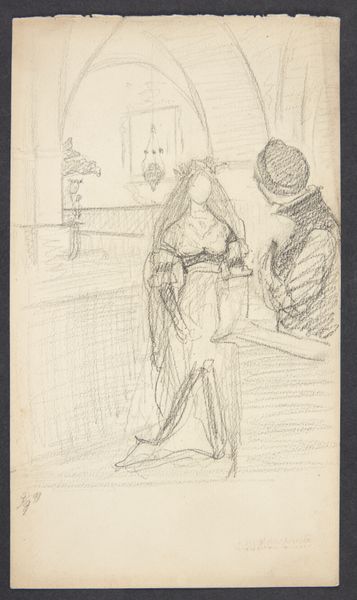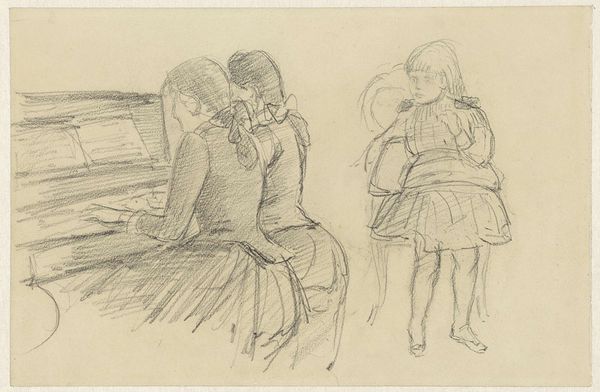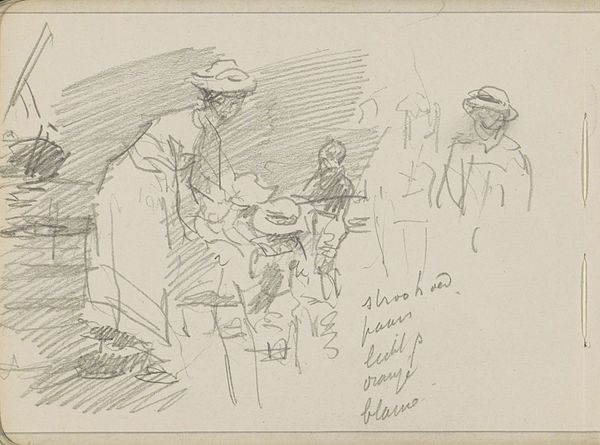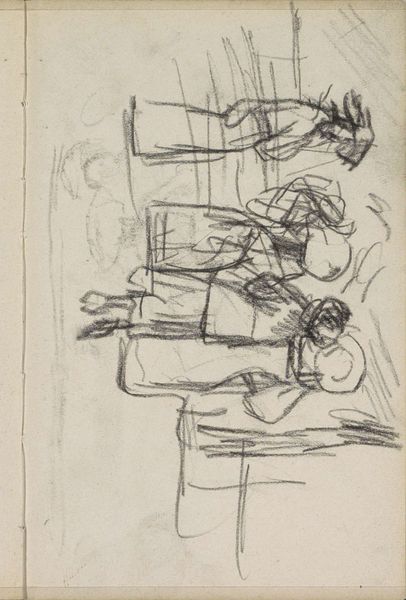
drawing, pencil
#
drawing
#
figuration
#
pencil
#
genre-painting
Dimensions: overall: 28.3 x 41 cm (11 1/8 x 16 1/8 in.)
Copyright: National Gallery of Art: CC0 1.0
Curator: Jean-Louis Forain’s drawing, "Gentleman's Toilette," presents us with an intimate glimpse into a domestic scene, rendered in what appears to be pencil. The immediacy of the medium draws me in. Editor: The sketchy nature of the drawing, the raw, almost unfinished quality, lends it a fascinating roughness. You sense the fleeting moment being captured, the almost accidental beauty of ordinary lives. I wonder, what were the conditions of making? Curator: I see how the quick, repeated strokes define form and shadow. Notice how the composition hinges on the contrast between the figure in the foreground, her back arching as she arranges her hair, and the gentleman in the background. Semiotically, we are looking at an inversion of gender roles. Editor: Yes, and there’s something striking in the economy of means. The paper itself becomes significant—its texture visible beneath the pencil marks—testifying to the direct, unfiltered application of the artist’s hand. What about access to paper, its manufacture, its cost at the time? These factor into this art being created. Curator: Indeed. Formally, the lack of detail focuses attention on the gesture and posture, heightening the psychological tension between the figures. We are prompted to infer much from so little. Is it frustration? Intimacy? Distance? It’s precisely this ambiguity that gives the work its power. Editor: Perhaps it's less about psychological tension and more about a documentation of work. Is this an aristocrat in finery or is the 'gentleman' mending the other's dress or suit after hours. Considering his other works of this time it is fair to assert a context rooted in Parisian everyday labor. Curator: That offers an entirely different reading. One might consider also the artist's hand, the physical act of creation. Is there some aspect in their formal configuration, like balance and asymmetry? The weight, distribution of marks… it is clearly well structured. Editor: And considering Forain’s prints produced during the Franco-Prussian war, and the political dimensions of printmaking and the economy around that industry, that might give context. What's being represented and by whom. That’s what feels most relevant. Curator: Yes, bringing in historical and political elements expands one’s view significantly, while also appreciating its stark visual impact. It does demand further, closer consideration to unravel the narrative thread—or, perhaps, the intentional absence thereof. Editor: Absolutely, and recognizing those forces allows a richer appreciation of how an ordinary material, like a pencil, became a tool for constructing such suggestive imagery from that particular period of labor.
Comments
No comments
Be the first to comment and join the conversation on the ultimate creative platform.
